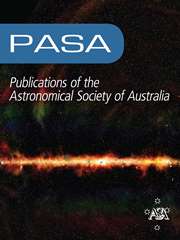No CrossRef data available.
Article contents
CosmoDRAGoN II: Remnant Radio Galaxies in Group and Cluster Environments
Published online by Cambridge University Press: 27 October 2025
Abstract
Radio galaxy remnants are a rare subset of the radio-loud active galactic nuclei (RLAGN) population, representing the quiescent phase in the RLAGN lifecycle. Despite their observed scarcity, they offer valuable insights into the AGN duty cycle and feedback processes. Due to the mega-year timescales over which the RLAGN lifecycle takes place, it is impossible to observe the active to remnant transition in real-time. Numerical simulations offer a solution to follow the long-term evolution of RLAGN plasma. In this work, we present the largest suite (to date) of three-dimensional, hydrodynamic simulations studying the dynamic evolution of the active-to-remnant transition and explore the mechanisms driving cocoon evolution, comparing the results to the expectations of analytic modelling. Our results show key differences between active and remnant sources in both cluster environments and in lower-density group environments. We find that sources in low-density environments can remain overpressured well into the remnant phase. This significantly increases the time for the remnant lobe to transition to a buoyant regime. We compare our results with analytic expectations, showing that the long-term evolution of radio remnants can be well captured for remnants whose expansion is largely pressure-driven if the transition to a coasting phase is assumed to be gradual. We find that remnants of low-powered progenitors can continue to be momentum-driven for about 10 Myr after the jets switch-off. Finally, we consider how the properties of the progenitor influence the mixing of the remnant lobe and confirm the expectation that the remnants of high-powered sources have long-lasting shocks that can continue to heat the surrounding medium.
Information
- Type
- Research Article
- Information
- Creative Commons
- This is an Open Access article, distributed under the terms of the Creative Commons Attribution licence (https://creativecommons.org/licenses/by/4.0/), which permits unrestricted re-use, distribution and reproduction, provided the original article is properly cited.
- Copyright
- © The Author(s), 2025. Published by Cambridge University Press on behalf of Astronomical Society of Australia

